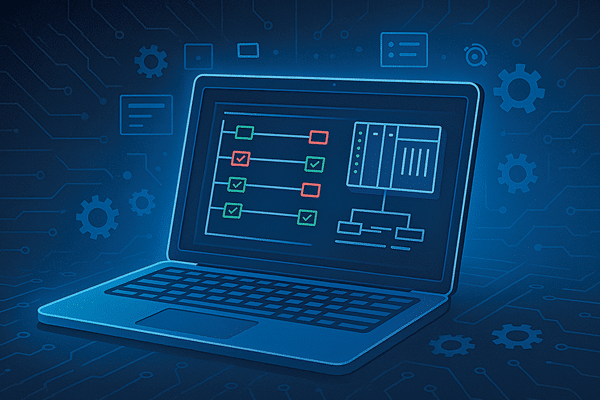As industries embrace digital transformation, virtual PLCs will be key to boosting efficiency, cutting costs, and enabling innovation. The future of industrial automation is clearly software-driven.

Programmable logic controllers (PLCs) have long served as the backbone of industrial automation, reliably managing machinery and processes across sectors. Traditionally hardware-based, PLCs were built for specific control tasks. Now, with advances in computing and cloud technologies, a new paradigm has emerged—Virtual PLCs (vPLCs). These software-based controllers bring greater flexibility, scalability, and connectivity, reshaping the future of industrial automation.
What are virtual PLCs?
A virtual PLC (vPLC) is a software-based controller that performs the same functions as a traditional hardware PLC but operates on standard computing platforms. Instead of being tied to dedicated hardware, vPLCs run on industrial PCs, edge devices, or cloud servers. This virtualisation enables industries to deploy, manage, and scale control systems more efficiently while reducing reliance on proprietary hardware.
How do vPLCs work?
Virtual PLCs (vPLCs) utilise a combination of industrial computing, virtualisation, and cloud technologies to function effectively. Unlike traditional PLCs that rely on dedicated hardware, vPLCs operate on general-purpose industrial PCs, edge devices, or cloud servers, using hypervisors and containerisation to create isolated environments for control applications. Real-time operating systems (RTOS) and software-based logic execution engines ensure that vPLCs maintain the deterministic performance required for industrial automation.
Fieldbus communication protocols such as EtherCAT, PROFINET, and Modbus allow seamless interaction with sensors, actuators, and other industrial devices.
A key enabler of vPLCs is industrial IoT (IIoT) and edge computing, which improve remote monitoring and predictive maintenance. Machine learning and AI-powered analytics integrated with vPLCs support production optimisation and fault detection before failures occur. Technologies like 5G and time-sensitive networking (TSN) further enhance real-time data transmission, increasing reliability in critical applications.
Oops! This is an EFY++ article, which means it’s our Premium Content. You need to be a Registered User of our website to read its complete content.
Good News: You can register to our website for FREE! CLICK HERE to register now.
Already a registered member? If YES, then simply login to you account below. (TIP: Use ‘forgot password’ feature and reset and save your new password in your browser, if you forgot the last one!)







